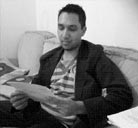Zawahiri's vision of polarising Muslim societies along sectarian lines aligned alarmingly well with the Pentagon's own regional divide-and-rule strategies to foster Salafi jihadists as a way to not just undercut Iran and Syria, but even undermine the potency of democratic uprisings that threatened to endanger the Gulf regimes. It also, of course, appeared to reduce the risk of major mass casualty attacks.
Four days after writing his letter declining the British offer of a renewed 'covenant of security', bin Laden's Abbottabad compound was raided, and the terror chief killed.
By facilitating the assassination of Osama bin Laden, US, Saudi and Pakistani intelligence agencies resolved the internal debate among the terror group's leadership. While they aborted bin Laden's vision of a united Muslim world hell-bent on destroying the West, in doing so, they brought to the fore bin Laden's lieutenant Zawahiri, who was also under Pakistani protection at the time according to ISI sources.
In her book The Wrong Enemy (2014), Carlotta Gall reports that Afghan national security officials were informed by a Pashtun tribal elder in 2005 that al-Zawahiri was "staying as a guest at the house of a senior Pakistani government official in Kohat""--"that official was "the governor of the North West Frontier province, a retired general, and a Musharraf appointee."
The information was passed on to President Karzai, and given US-Afghan intelligence sharing arrangements, would likely have been passed on to the Americans. According to Gall, after the bin Laden raid, "two American counterterrorism officials told me that the account of Zawahiri's hiding place was entirely possible and that they had seen similar such reports."
That protection continues to this day. "There are indicators that some elements of the Pakistani government may be protecting Zawahiri," one US intelligence official told Newsweek a year after the raid. "We have reports that he's been hanging out in Karachi for brief periods, and we just don't think he's going to be doing that without a lot of people knowing about it."
Back in October 2010, a senior NATO intelligence official told CNN that alongside bin Laden, Zawahiri's location had also been determined by US intelligence, and that both were living "comfortably" in Pakistan nearby each other, under ISI protection. The revelation indicated that US intelligence on bin Laden's presence in Abbottabad had also identified Zawahiri's location.
The 2008 Pentagon memo on Abu al-Libi had also showed that since 2005, the CIA was aware that bin Laden and Zawahiri had remained in close proximity, including during bin Laden's shift toward Abbottabad.
But the US, Saudi Arabia and Pakistan had chosen to target bin Laden, alone.
Under Zawahiri's watch, al-Qaeda's activities in the region accelerated across the region in Iraq, Syria, Yemen, Libya, Somalia, Algeria and beyond. The upshot of these activities has not been to align with other Islamist forces, but to accentuate splits within the Salafi-jihadist movements, and within broader Islamist and Salafi movements overall.
This has increasingly ended up serving US geopolitical interests. For instance, the al-Qaeda-affiliated Libyan Islamic Fighting Group (LIFG), whose fighters reported directly to various senior al-Qaeda deputies, played a key role in the rebellion that toppled Col. Gaddafi, under the sponsorship and protection of NATO.
A Canadian intelligence report from 2009 described the rebel stronghold of eastern Libya as an "epicentre of Islamist extremism", from which "extremist cells" operated in the region. The intelligence report confirmed that "several Islamist insurgent groups" were based in eastern Libya, many of whom were also "urging followers to fight in Iraq."
During NATO's intervention in Libya, al-Qaeda's integral presence on the ground as part of the rebellion led Canadian pilots to joke privately that they were al-Qaeda's air force, "since their bombing runs helped to pave the way for rebels aligned with the terrorist group."
By the following year, US-backed support for al-Qaeda affiliated groups through regional allies"--"the Gulf regimes and Turkey"--"focused on Syria. Saudi Arabia played a lead role in the strategy under the helm of none other than Prince Bandar, who in 2012 was appointed Director General of the Saudi Intelligence Agency.
In my exclusive investigation last month, I explored the startling implications of a declassified Defence Intelligence Agency (DIA) report revealing that in its drive to topple Bashar al-Assad's regime in Syria, the West oversaw these allies in supporting Islamist extremist rebels, including "al-Qaeda in Iraq."
The Pentagon report showed that in August 2012, two years before ISIS invaded Iraq, the DIA had received raw information that the support for al-Qaeda linked rebels threatened to spawn a "Salafist Principality" in eastern Syria that could, further, give rise to an "Islamic State" across Iraq and Syria.
Next Page 1 | 2 | 3 | 4 | 5 | 6 | 7 | 8 | 9 | 10 | 11 | 12 | 13 | 14 | 15 | 16 | 17 | 18 | 19 | 20 | 21 | 22 | 23
(Note: You can view every article as one long page if you sign up as an Advocate Member, or higher).





